
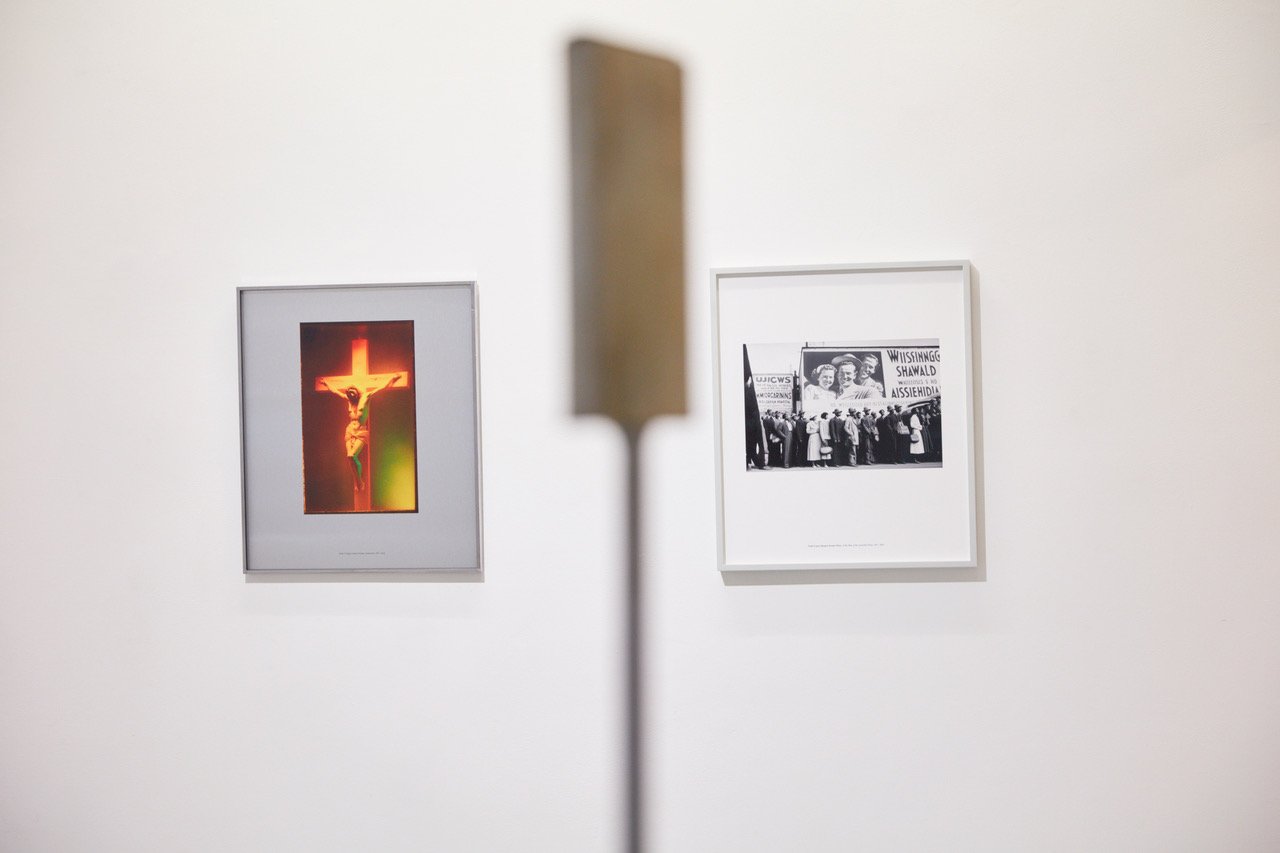

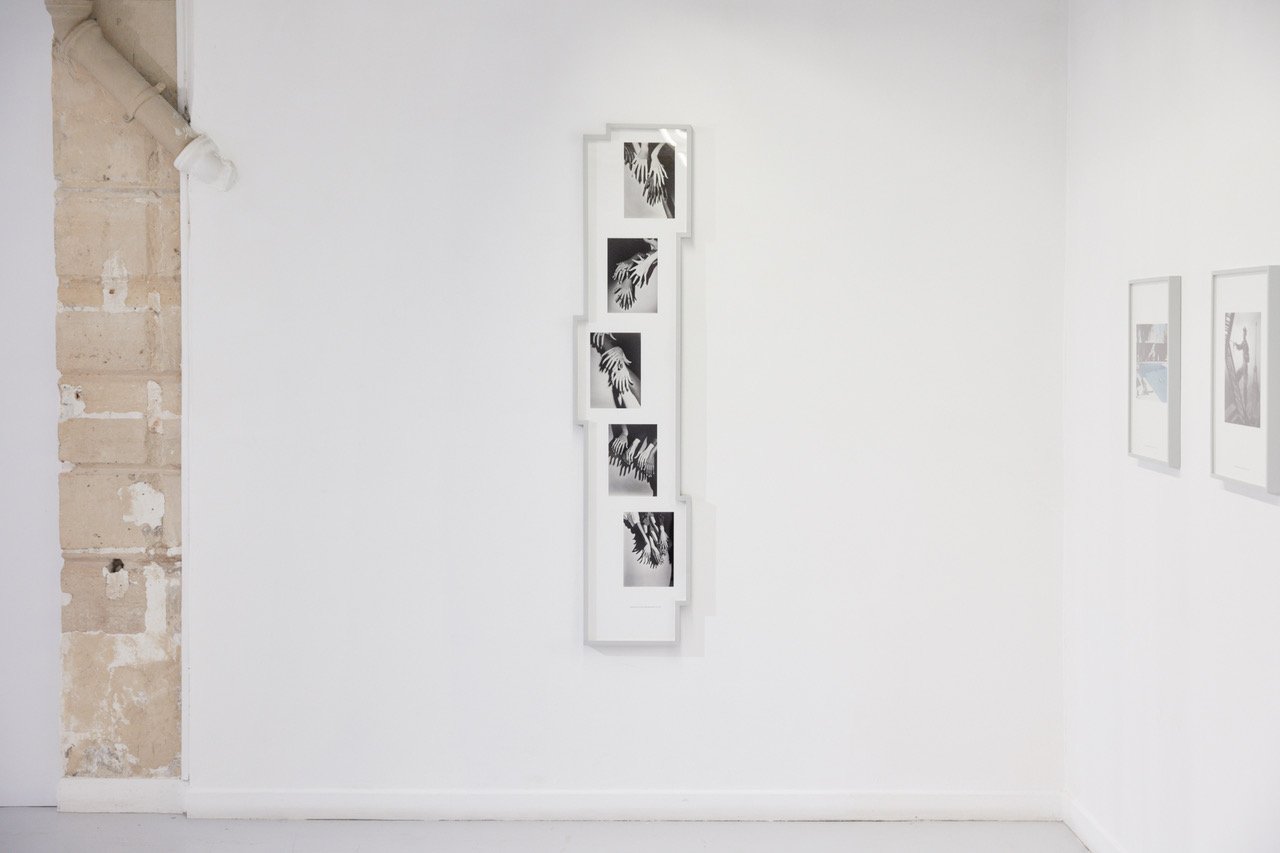

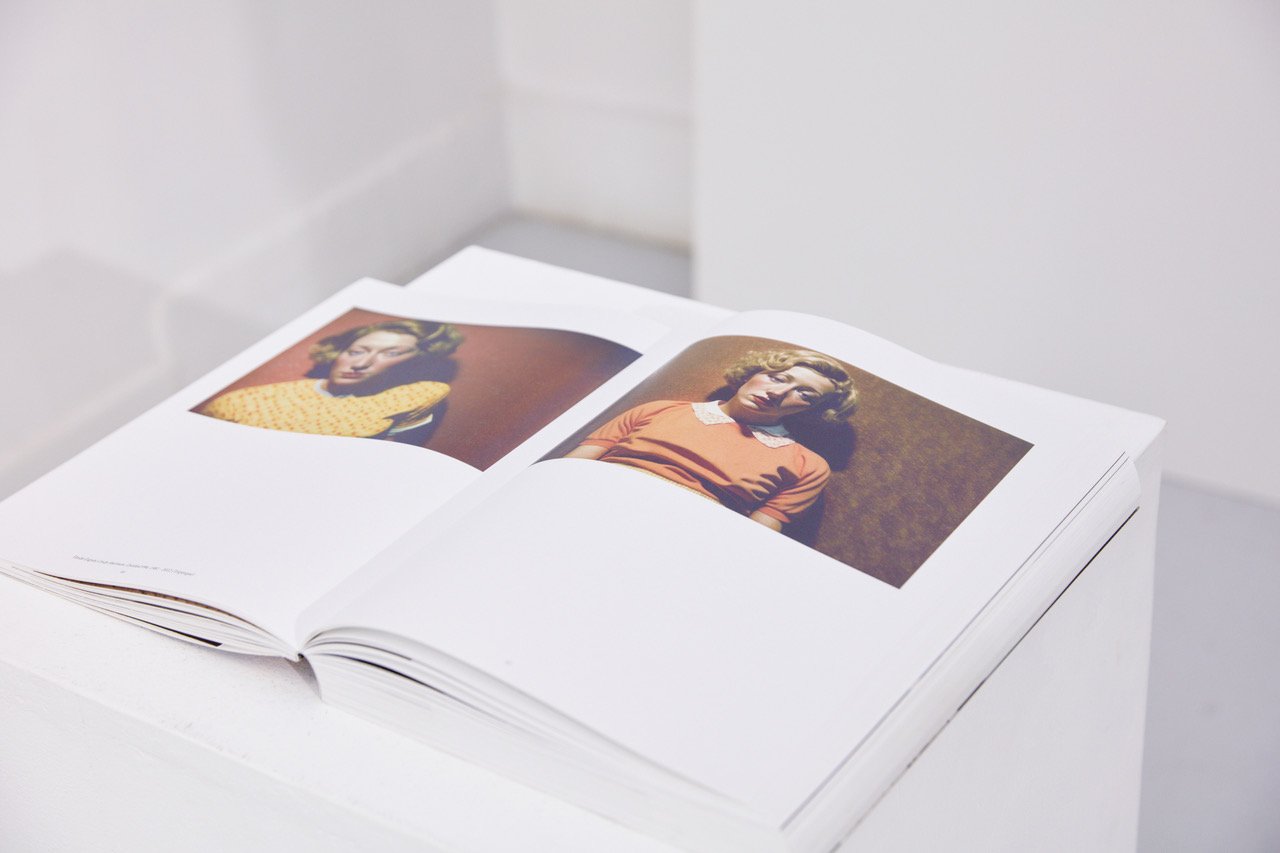
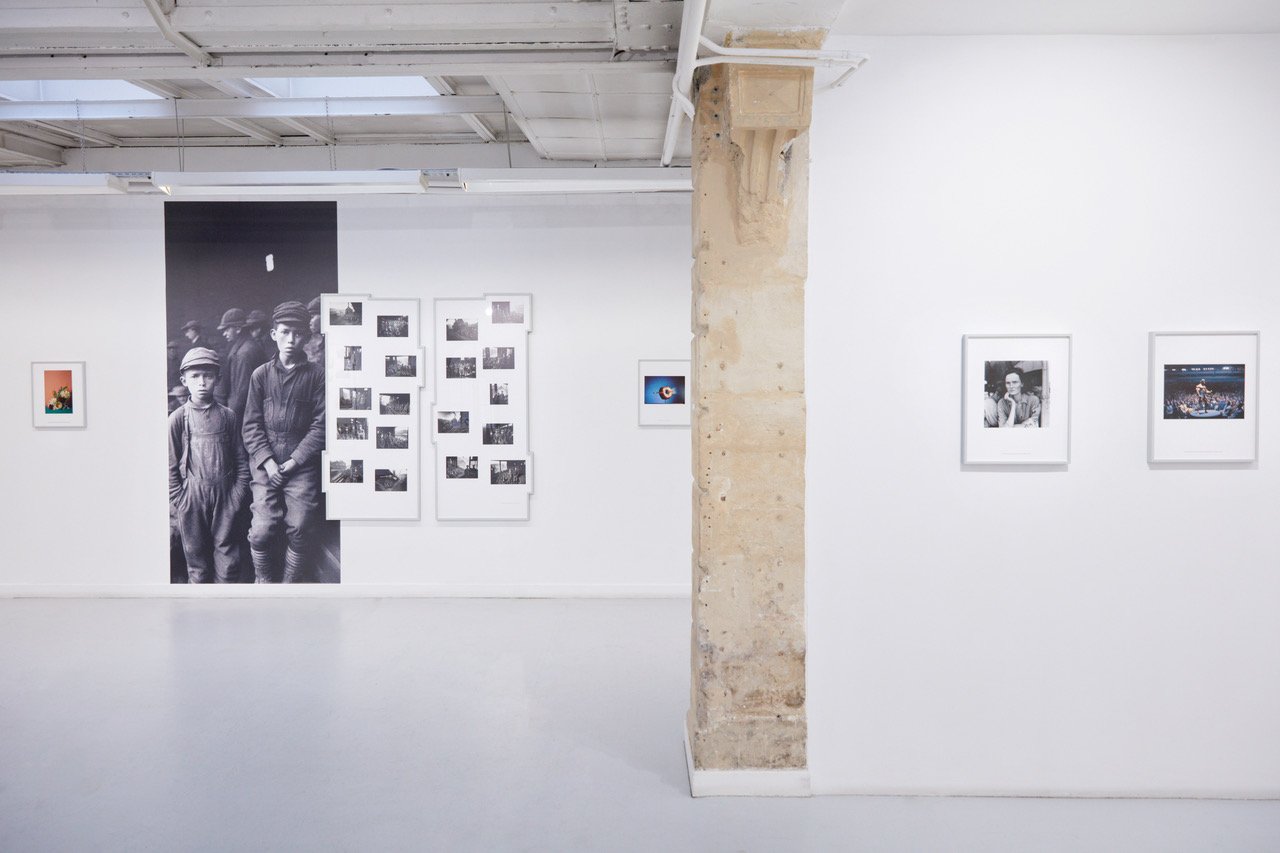
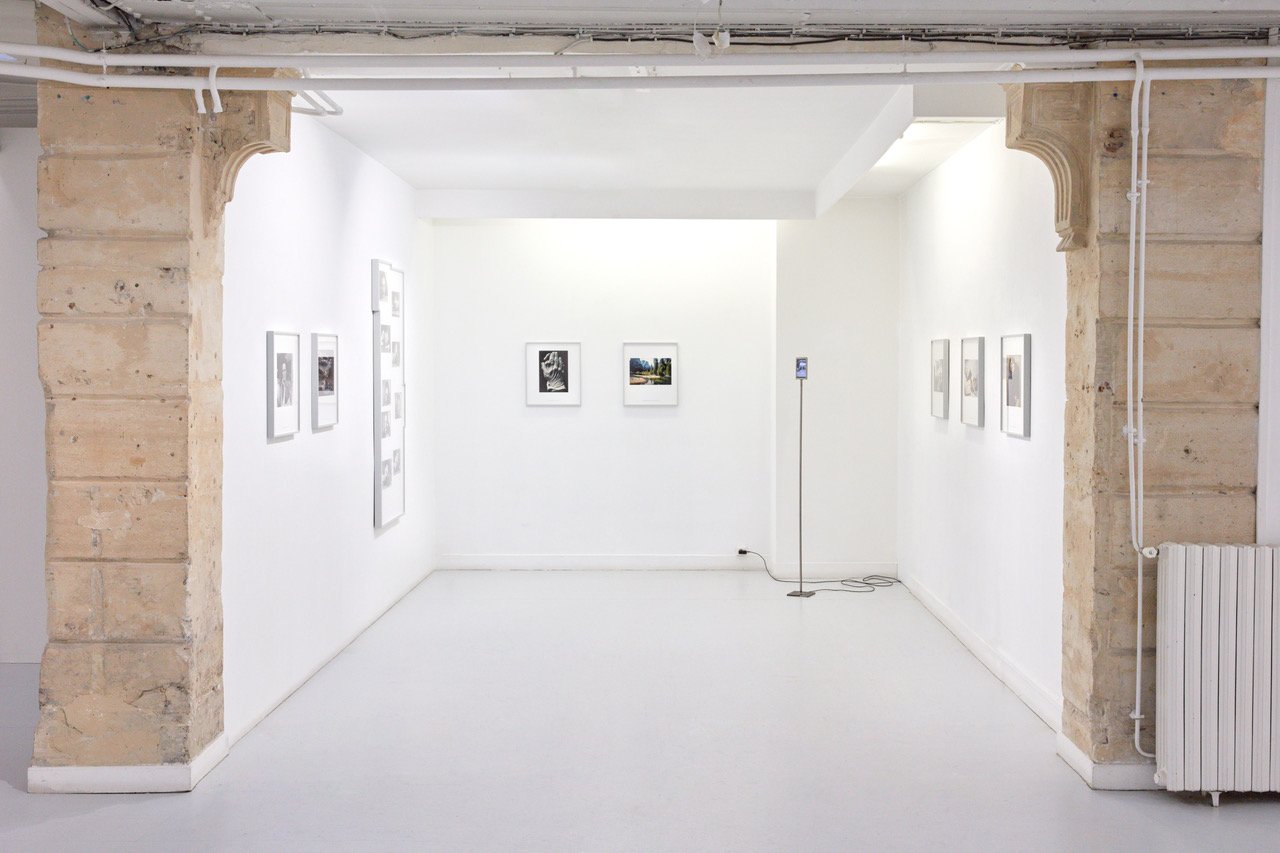
AURÉLIE CAVANNA
UNE HISTOIRE PARALLÈLE
Essai, Exposition à la Galerie Papillon, Paris 2023.
FRENCH/
Appareil sans objectif ou avec microscope, ou image virtuelle sans appareil du tout, depuis ses débuts, le duo Brodbeck & de Barbuat joue de la technologie pour questionner la photographie. Mais pour eux, l’enjeu est loin de n’être qu’expérimental. Leurs projets, grands corpus déployés en chapitres, cherchent aussi autre chose : lumières nocturnes ou villes désertées qu’on ne voit qu’une fois saisies par un long temps de pose (Les Mondes perdus, 2004-2008 ; Memories of a Silent Worlds, 2008-2012), écorce d’arbre comme la surface d’une autre planète en vue microscopique (Images of Light and Dancing Spirits, 2014-2022), personnage féminin créé par ordinateur, ni vraiment humain, ni vraiment non-humain (Les 1000 Vies d’Isis, 2019-2021). Dans ces écarts entre réel perçu et rendu de l’image, entre repères du documentaire et étrangeté d’un récit qui n’en est pas tout à fait un, une même question : de quoi est habitée la matière qui fait le monde, la vie, la photographie, et qui nous échappe ?
Dans Une histoire parallèle (depuis 2022), Brodbeck & de Barbuat utilisent cette fois une intelligence artificielle (IA) pour générer une nouvelle histoire de la photographie à partir de prompts : suite de mots-clés que l’IA traduit en une image créée de toutes pièces, la plus probable selon ce qu’elle a « appris » à associer – tel mot égal telle image – dans l’immense base de données qu’est internet. Autrement dit, le reflet statistique d’une réalité calculé selon la mémoire que nous mettons tous en ligne. Ainsi, ce sont environ 200 des œuvres composant l’histoire du médium (Man Ray, Stephen Shore, Guy Bourdin, Andres Serrano, Jeff Wall) que Brodbeck & de Barbuat, après des recherches détaillées (technique, contexte), ont décrites à Midjourney. Souvent, il leur a fallu largement prompter, et parfois réaliser de nombreux essais avant que l’IA s’approche de l’original, suffisamment mais pas trop, afin de laisser visibles quelques défauts. Pour certaines œuvres, une « constellation » d’essais est d’ailleurs exposée, en contrepoint d’autres revisitées en une unique « version IA » de petit format. En effet, Midjourney ne maîtrise pas tout ou a des idées bien arrêtées. Pour le Peintre de la tour Eiffel, Paris (1953), cherchant à répondre à ce qu’elle pense attendu, l’IA tenait visiblement à ce qu’une autre tour Eiffel apparaisse à l’arrière-plan, en plus de celle que l’on ne faisait que deviner dans la photographie de Marc Riboud. Dans Étude d’après Horst P. Horst, Hands, Hands, Hands, 1941, on ne peut que constater que la représentation des mains n’est pas encore sa spécialité. Les feuilles non plus (Taryn Simon). Quant à Migrant Mother, Nipomo, California (1936) de Dorothea Lange, elle se trouve « liftée » par le biais publicitaire de Midjourney.
Mais face à chaque image s’insinue ce trouble entre ce que nous reconnaissons, comme cette plage artificielle de Martin Parr, et ce qui cloche sans qu’on parvienne toujours, butant sur nos souvenirs, à déterminer précisément quoi. Car si ce projet critique une nouvelle technologie mettant à mal notre regard, entre pillage des œuvres, dilution d’un patrimoine visuel et appauvrissement esthétique, il s’intéresse avant tout à la mémoire : la nôtre, celle de l’IA, celle de la photographie. Cette dernière fait-elle histoire ? Qu’en retenons-nous ? Qu’en retient une IA modelée par nos données ? Surtout, que retient du réel la matière d’une image ? Une histoire parallèle n’invite à rien de moins que replonger dans les photographies d’origine, et ce qui les habite. Indéfinissable, il s’y passe quelque chose. Peut-être touchons-nous alors à ce qui fait l’âme d’une photographie.
Aurélie Cavanna.
ENGLISH/
Be it a camera without a lens or with a microscope, or a virtual image without a camera at all, Brodbeck & de Barbuat have been using technology to question photography from the start. The challenge for them however is far from being just experimental. Their projects, large collections rolled out in chapters, also look for something else: nocturnal lights or deserted cities that can only be seen once captured using long exposure times (Les Mondes perdus, 2004-2008; Memories of a Silent Worlds, 2008-2012), tree bark that appears like the surface of another planet with a microscopic view (Images of Light and Dancing Spirits, 2014-2022), a computer-generated female character, neither truly human nor truly non-human (Les 1000 Vies d'Isis, 2019-2021). In these differences between perceived reality and image rendering, between documentary reference points and the strangeness of a narrative that isn’t quite a story, the same question remains : what is in the invisible material that makes up the world, life and photography ?
In Une histoire parallèle (since 2022), Brodbeck & de Barbuat this time use artificial intelligence (AI) to generate a new history of photography from prompts : a sequence of keywords that AI translates into an image created from scratch, the most probable one according to what it has "learned" to associate with it- such a word equals such an image - from the immense database that is the Internet. In other words, a statistical reflection of a reality calculated according to the memory that we have all put online. After detailed research (technique, context), Brodbeck & de Barbuat described to Midjourney some 200 works from the history of the medium (Man Ray, Stephen Shore, Guy Bourdin, Andres Serrano, Jeff Wall). In many cases, they had to do a great deal of prompting, and sometimes many attempts, before AI came close to the original - enough, but not too much, to leave a few visible flaws. For some of the works, a "constellation" of attempts is exhibited, in counterpoint to others revisited in a single, small-format "AI version". Indeed, Midjourney has not mastered everything or has very definite ideas. For Peintre de la tour Eiffel, Paris (1953), in trying to do what it thought was expected, AI clearly wanted another Eiffel Tower to appear in the background, in addition to the one we could only guess at in Marc Riboud's photograph. In Étude d'après Horst P. Horst, Hands, Hands, Hands, 1941, we can only conclude that the representation of hands is not yet AI’s specialty. Nor are leaves (Taryn Simon). As for Dorothea Lange's Migrant Mother, Nipomo, California (1936), she has had some cosmetic facial work done by Midjourney's advertising bias.
But with each image there's a suggestion of confusion between what we recognize, like Martin Parr's artificial beach, and what is wrong with it. And with our struggling memories, we can't always determine exactly what it is. For while this project criticizes a new technology that undermines our perception, between the looting of works of art, the dilution of a visual heritage and aesthetic impoverishment, it is above all concerned with memory : our own, that of AI, that of photography. Does photography make history ? What do we retain of it ? What does an AI shaped by our data retain ? Most importantly, what does the material of an image retain of reality ? Une histoire parallèle invites us to dive back into the original photographs and what inhabits them. Something indefinable is going on. Perhaps it is touching on what makes up the soul of a photograph.
Aurélie Cavanna.